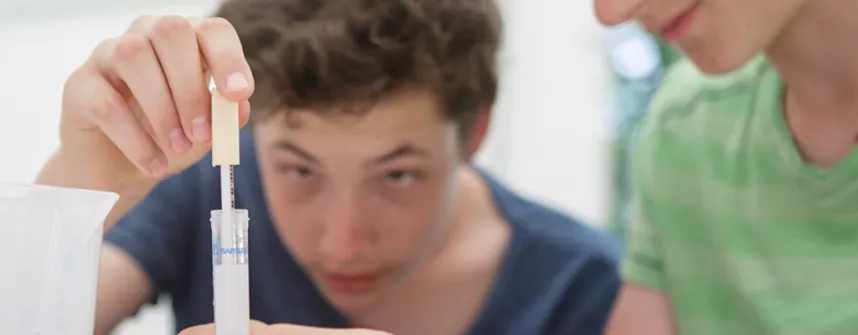Collecting, researching and discovering the seas: My Ocean Sampling Day publishes its first results
September 5, 2017
MyOSD’s citizen science project in Science Year 2016*2017 – Seas and Oceans is publishing the first results on the study of microbes in local seas and rivers one year after the nationwide sampling campaign. The public participation was a success: 98 percent of the data was scientifically usable.
On June 21, 2016, citizens took water samples from German shores and rivers that flow into the North and Baltic Seas. The objective of the project in Science Year 2016/2017 – Seas and Oceans was to find out more about which microbes can be found in our local waters. Microorganisms are important for our climate and the life cycle of marine organisms. After almost 14 months of painstaking analyses and laboratory work, the first results are now available.
Starting in 2014, Jacobs University and the Max Planck Institute for Marine Microbiology in Bremen have organized the citizen science project MyOSD as part of the international Ocean Sampling Day. In 2016, the project was carried out on a major scale in Science Year Seas and Oceans and extended inland for the first time: rivers that flow into the ocean, such as the Weser, Elbe and Oder Rivers, were also studied. Using specially developed sampling kits, citizens took just under 800 water samples that they then sent to the laboratory in Bremen.
The analysis indicated that the participants worked with extreme care – 98 percent of all samples could be used. Researchers extracted the bacterial genome of each individual sample and their genetic blueprints were compared to a large index of known groups of bacteria. This is the first comprehensive data record on the diversity and distribution of microbes in German waters. The results are freely accessible on the project’s website www.my-osd.org/ergebnisse/browser.
The findings highlight the significance of the most common bacteria in the marine ecosystem: The known groups of bacteria SAR11 and Synechococcus as well as a bacterium in the Rhodobacteraceae family were found particularly frequently. SAR11 is a laboratory name comprising the first place of discovery, the Sargasso Sea, and the sample number 11. Researchers assume that these are the most commonly found organisms on the earth whose number even exceeds the number of stars in the Milky Way many times over. Synechococcus is one of the cyanobacteria, which are often called blue algae due to their color – although they are not algae. These organisms produce oxygen and are therefore responsible for providing air to breathe on the earth. Roseobacter is a genus of the Rhodobacteraceae that can even influence the weather. All three bacteria play a vital role in balancing the Earth’s climate. You can find out more in the MyOSD 2016 results video titled “Triff die MyOSD-Bakterien” (Meet the MyOSD Bacteria) at www.my-osd.org and at www.wissenschaftsjahr.de/myosd.
The findings show how successful citizen scientists can be. MyOSD Germany has assisted researchers to obtain a unique wealth of data. They can now, for instance, investigate how changes in the diversity of microbes may influence the climate or what ecological role they play in biological material cycles. The concurrent sampling of major rivers strongly influenced by people also assists in determining the anthropogenic impact on the microbial biodiversity of the oceans.
The MyOSD project in Science Year Seas and Oceans was a major success not only thanks to the valuable results it yielded. The participating citizens also dealt actively with the ocean as a habitat and the microorganisms living in it.
More information:
www.my-osd.org
www.wissenschaftsjahr.de
Questions will be answered by:
Frank Oliver Glöckner | Professor of Bioinformatics | Jacobs University
myosd-contact [at] microb3.eu | Tel.: +49 421 200-3167
Christine Rutke | Editorial Office for Science Year 2016*17 – Seas and Oceans
presse [at] wissenschaftsjahr.de | Tel.: +49 30 308811-70
About Science Year 2016*17 – Seas and Oceans
Marine research is the theme for Science Year 2016*17. Seas and oceans cover around 70 percent of our planet. They are the climate’s engines, food sources and economic center – and provide a place to live for many plants and animals. Scientists have been researching the oceans for a long time but much remains elusive and undiscovered. Science Year 2016* 2017 is dedicated to exploring the seas and oceans, protecting them and using them sustainably. Science Years are an initiative of the Federal Ministry of Education and research (BMBF) in collaboration with Wissenschaft im Dialog (WiD - Science in Dialog). They are an important instrument for scientific communication, bringing research to the wider public and fostering dialog between scientific research and society. Science Year 2016*2017 is supported by the German Marine Research Consortium (KDM) as a specialist partner.
